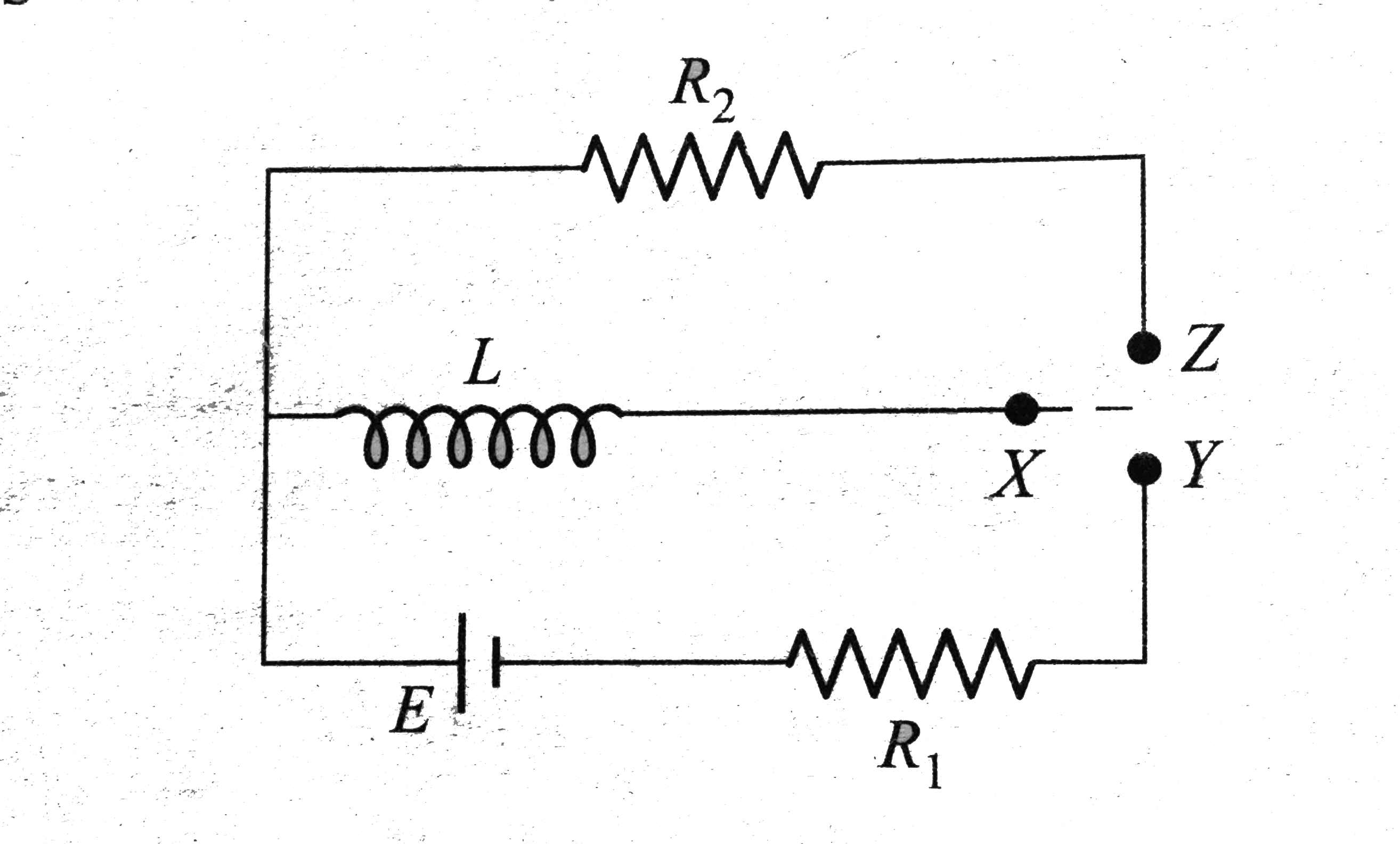The charge flowing through a resistance R varies with time t as Q=at−bt2. The total heat produced in R is
a3R6b
a3R3b
a3R2b
a3Rb
The correct Answer is:A
Q=at−bt2orI=dQ/dt=a−2bt
I=0fort=t0=a/2b, i.e, current flows from t=0→t=t0. The
heat produced is ∫t00i2Rdt=a3R/6b.
Topper's Solved these Questions
- HEATING EFFECT OF CURRENTBOOK - CENGAGE PHYSICS ENGLISHCHAPTER - HEATING EFFECT OF CURRENTEXERCISE - Multiple Correct
5 Videos
- HEATING EFFECT OF CURRENTBOOK - CENGAGE PHYSICS ENGLISHCHAPTER - HEATING EFFECT OF CURRENTEXERCISE - Assertion - Reasoning
6 Videos
- HEATING EFFECT OF CURRENTBOOK - CENGAGE PHYSICS ENGLISHCHAPTER - HEATING EFFECT OF CURRENTEXERCISE - Subjective
8 Videos
- GEOMETRICAL OPTICSBOOK - CENGAGE PHYSICS ENGLISHCHAPTER - GEOMETRICAL OPTICSEXERCISE - Integer Type
4 Videos
- INDUCTANCEBOOK - CENGAGE PHYSICS ENGLISHCHAPTER - INDUCTANCEEXERCISE - Concept Based
8 Videos
Similar Questions
The charge Q( in coulomb) flowing through a resistance R=10Ω varies with time t (in second) as Q=2t−t2 . The total heat produced in resistance R is
View SolutionThe charger Q(in coulomb) flowing through a resistance (R=10Ω) varies with time t(in second) as (Q= 2t-t2). The total heat produced in resistance R is
View SolutionThe charge flowing in a conductor varies with times as Q=at−bt2. Then, the current
View SolutionThe charge flowing in a conductor varies with times as Q=at−bt2. Then, the current
View SolutionA charge passing through a resistor varies with time as shown in the figure. The amount of heat generated in time t is best represented (as a function of time ) by

View SolutionThe charge q flowing in a conductor of uniform cross section, varies with time as q=αt−bt2. Then, the current
View SolutionThe charge flowing in a conductor varies with time as Q=at−12bt2+16ct3 where a, b and c are positive constants. If at time t, the current in the conductor is i, which of the following graphs is correct ?
View SolutionThe linear momentum of a particle varies with time t as p=a+bt+ct2. Then, whichh of the following is correct?
View SolutionA magnetic flux through a stationary loop with a resistance R varies during the time interval τ as ϕ=at(τ−t). Find the amount of heat the generated in the loop during that time
View SolutionIn the current shows Fig x is joined to Y for a long time and then X is joined to Z. The total heat produced in R2 is

View Solution